at TA = 25°C,
VS = ±8V, VCM = VS / 2, RLOAD = 10kΩ connected
to VS / 2, and CL = 100pF (unless otherwise noted)
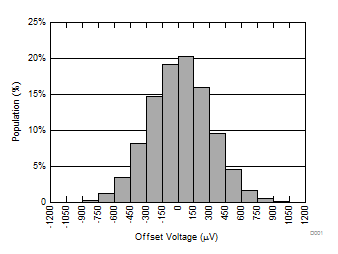
| Distribution from 13, 481 amplifiers; TA = 25°C |
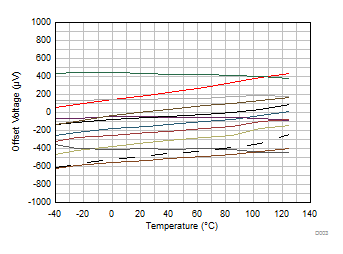
| VCM = V+ |
| Each color represents one sample device. |

| TA = 25°C |
| Each color represents one sample device. |
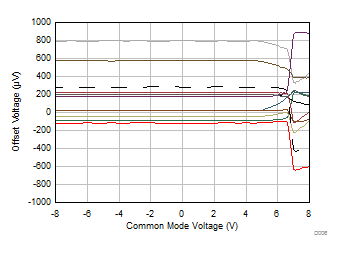
| TA =
125°C |
| Each color
represents one sample device. |
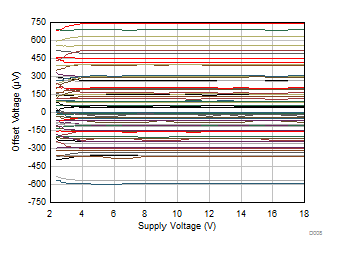
| VCM =
V– |
| Each color
represents one sample device. |
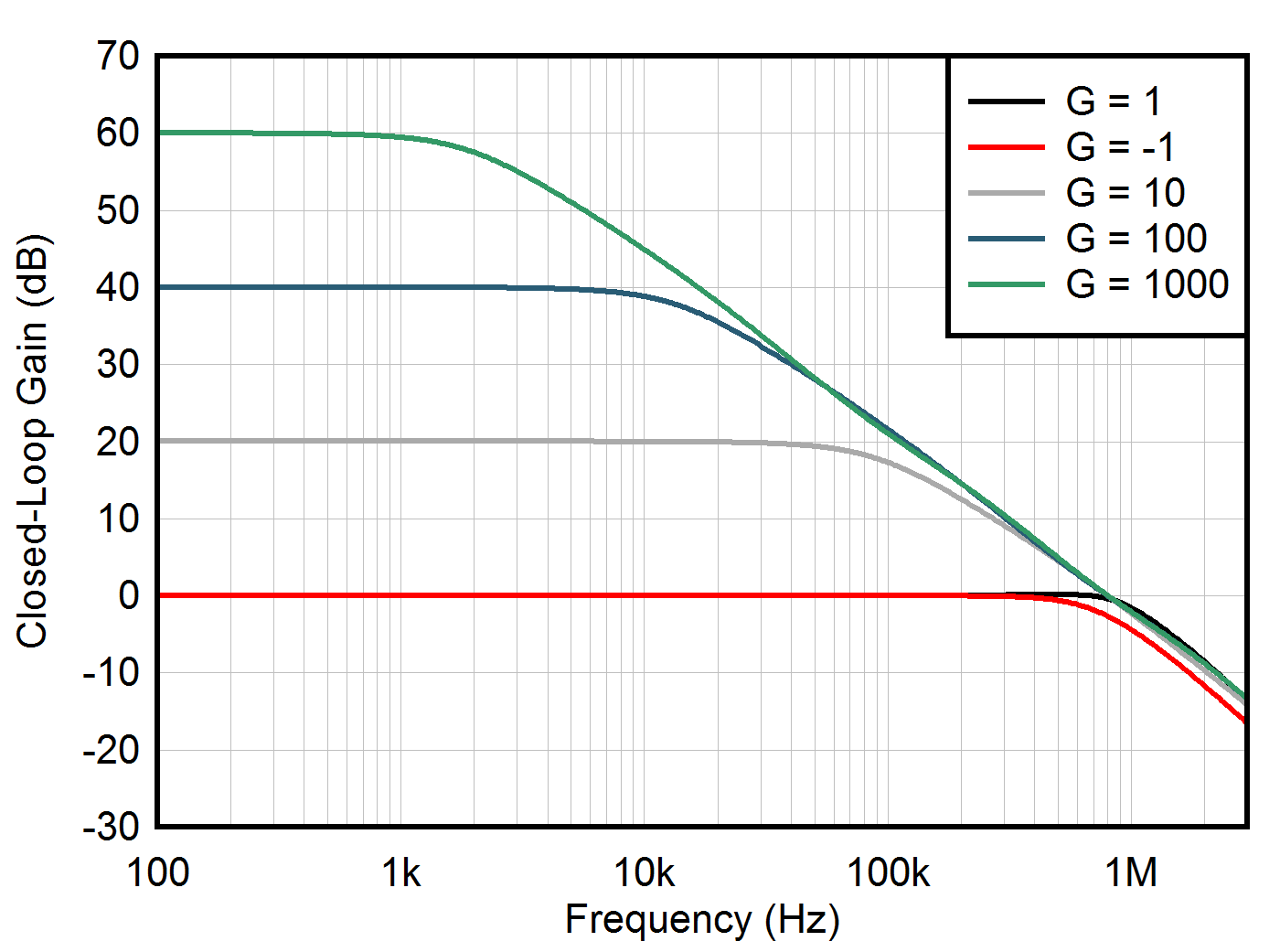 Figure 5-11 Closed-Loop Gain and Phase vs Frequency
Figure 5-11 Closed-Loop Gain and Phase vs Frequency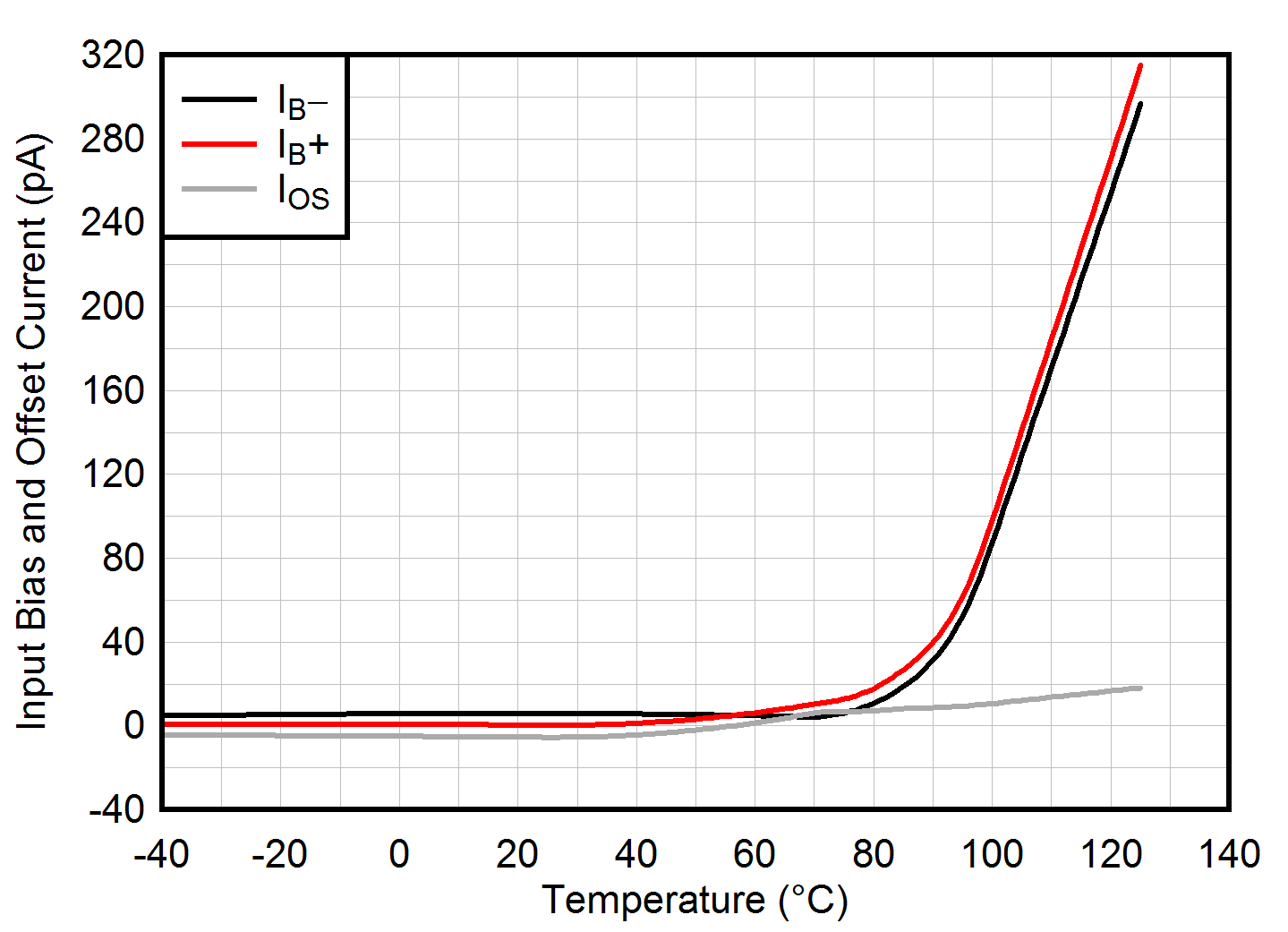 Figure 5-13 Input Bias Current vs Temperature
Figure 5-13 Input Bias Current vs Temperature Figure 5-15 Output Voltage
Swing vs Output Current (Sinking)
Figure 5-15 Output Voltage
Swing vs Output Current (Sinking)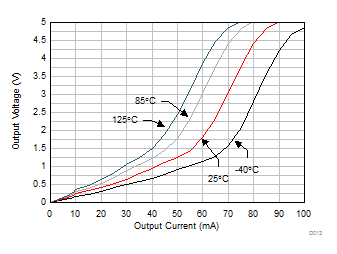
| VS = 5V, RL connected
to V+ |
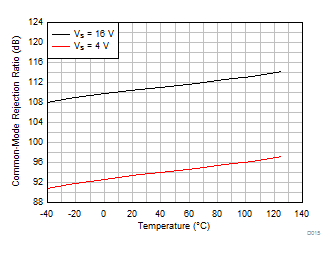 Figure 5-19 CMRR vs Temperature (dB)
Figure 5-19 CMRR vs Temperature (dB)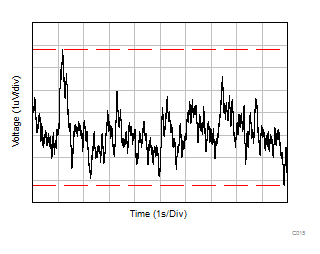 Figure 5-21 0.1Hz to 10Hz
Noise
Figure 5-21 0.1Hz to 10Hz
Noise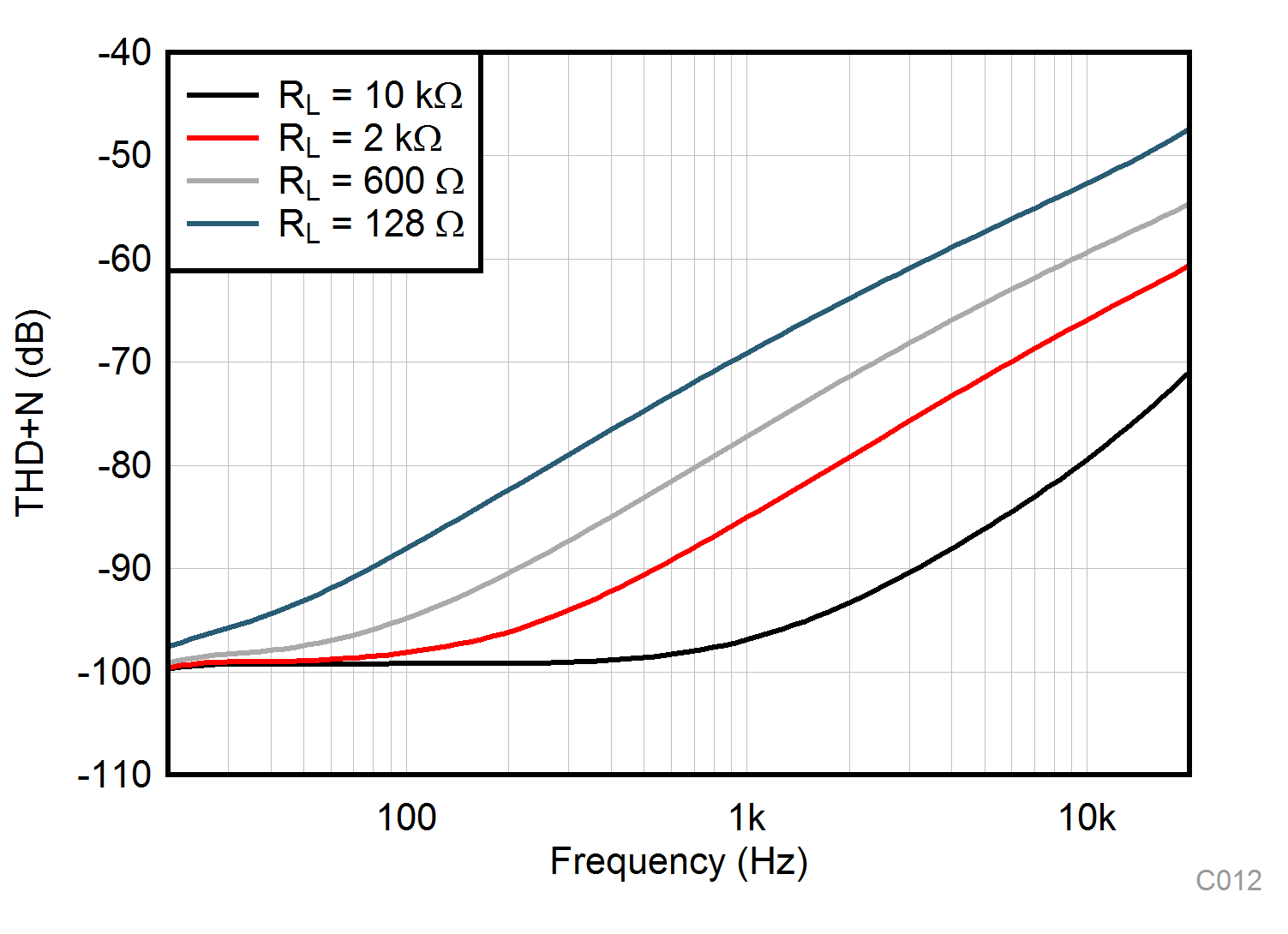
| BW = 80kHz,
VOUT = 3.5VRMS |
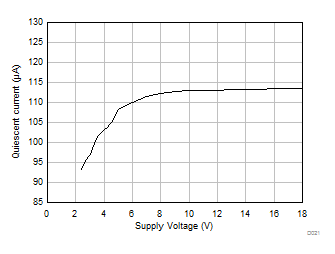 Figure 5-25 Quiescent Current per
Channel vs Supply Voltage
Figure 5-25 Quiescent Current per
Channel vs Supply Voltage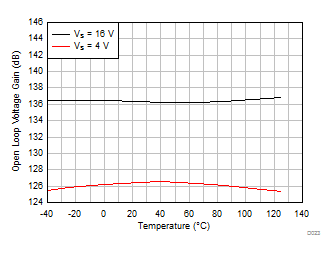 Figure 5-27 Open-Loop Voltage Gain vs Temperature (dB)
Figure 5-27 Open-Loop Voltage Gain vs Temperature (dB)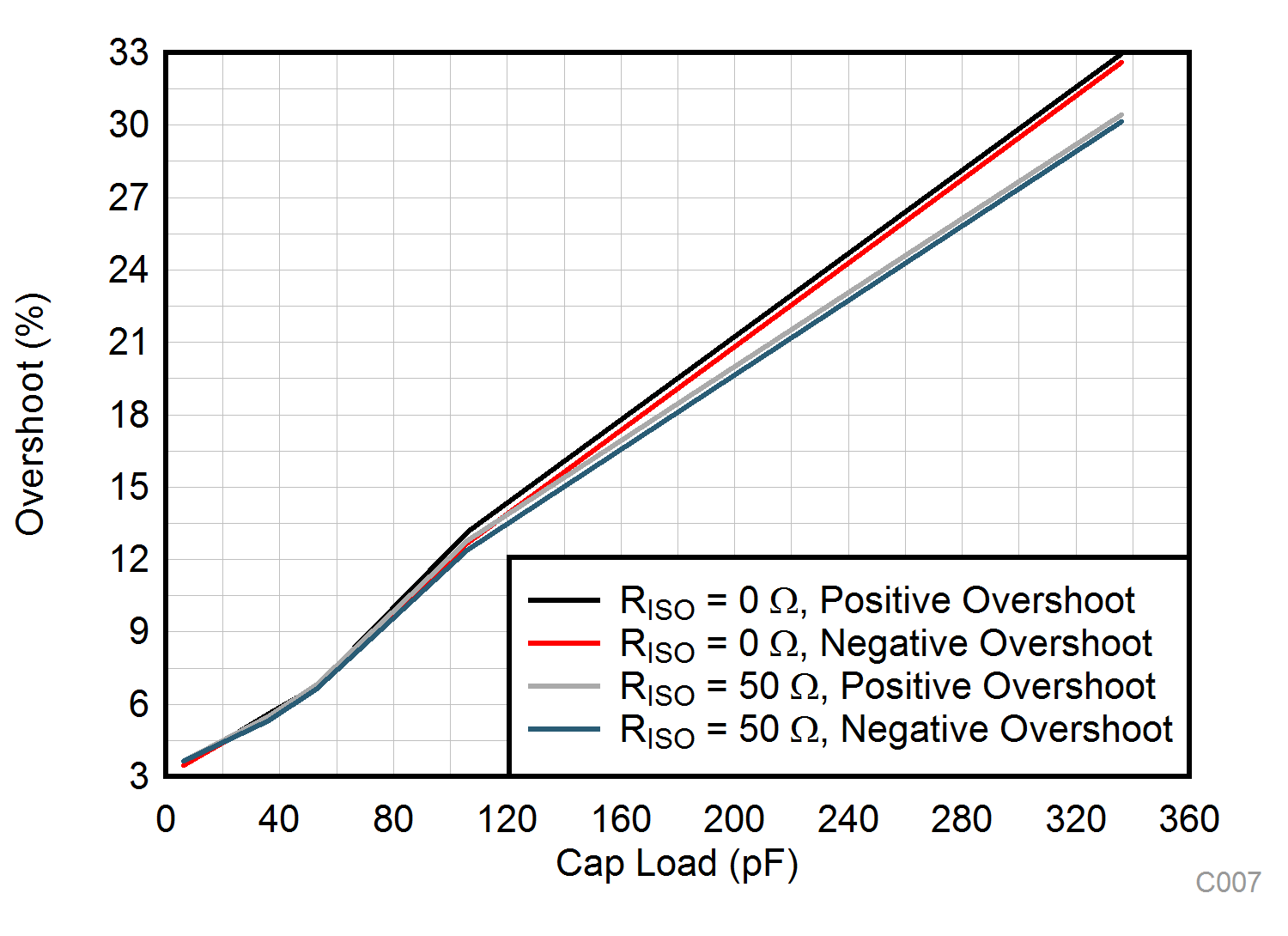
| G = –1, 100mV
output step |
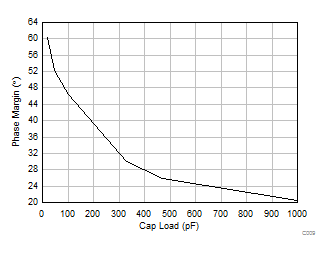
| G = –1, 100mV
output step |
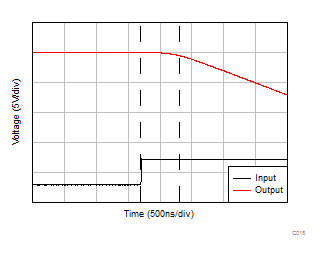 Figure 5-33 Positive Overload Recovery
Figure 5-33 Positive Overload Recovery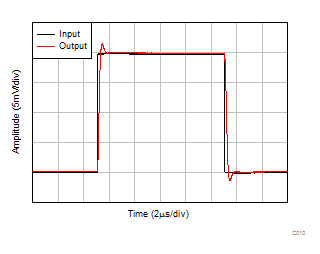
| CL =
20pF, G = 1, 20mV step response |
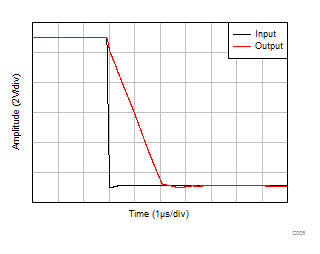 Figure 5-37 Large-Signal Step Response (Falling)
Figure 5-37 Large-Signal Step Response (Falling)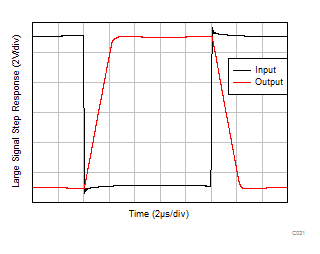 Figure 5-39 Large-Signal Step Response
Figure 5-39 Large-Signal Step Response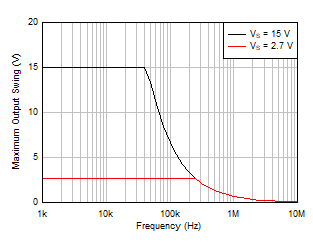 Figure 5-41 Maximum Output Voltage vs Frequency
Figure 5-41 Maximum Output Voltage vs Frequency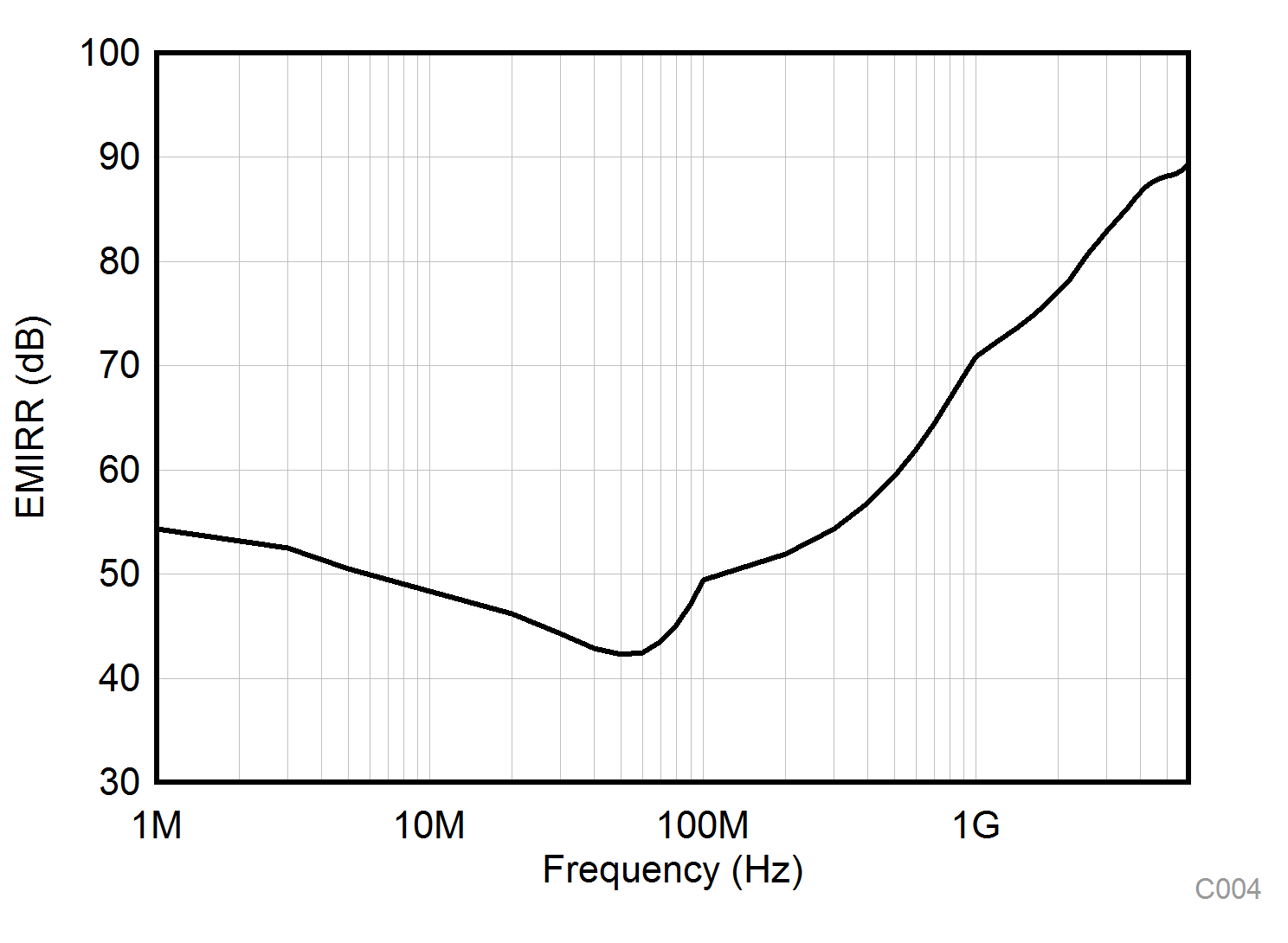 Figure 5-43 EMIRR (Electromagnetic Interference Rejection Ratio) vs Frequency
Figure 5-43 EMIRR (Electromagnetic Interference Rejection Ratio) vs Frequency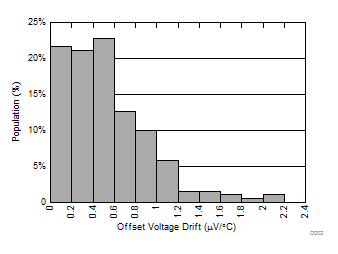
| Distribution from 175 amplifiers |
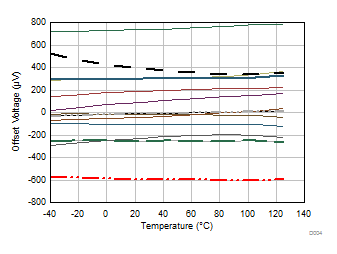
| VCM = V– |
| Each color represents one sample device. |
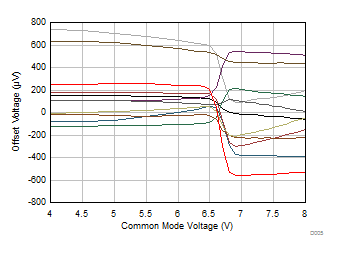
| TA = 25°C |
| Each color represents one sample device. |
(Transition Region)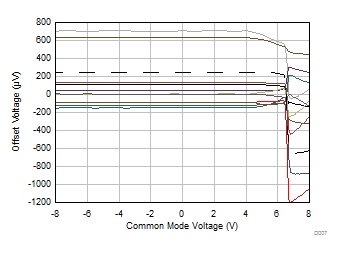
| TA =
–40°C |
| Each color
represents one sample device. |
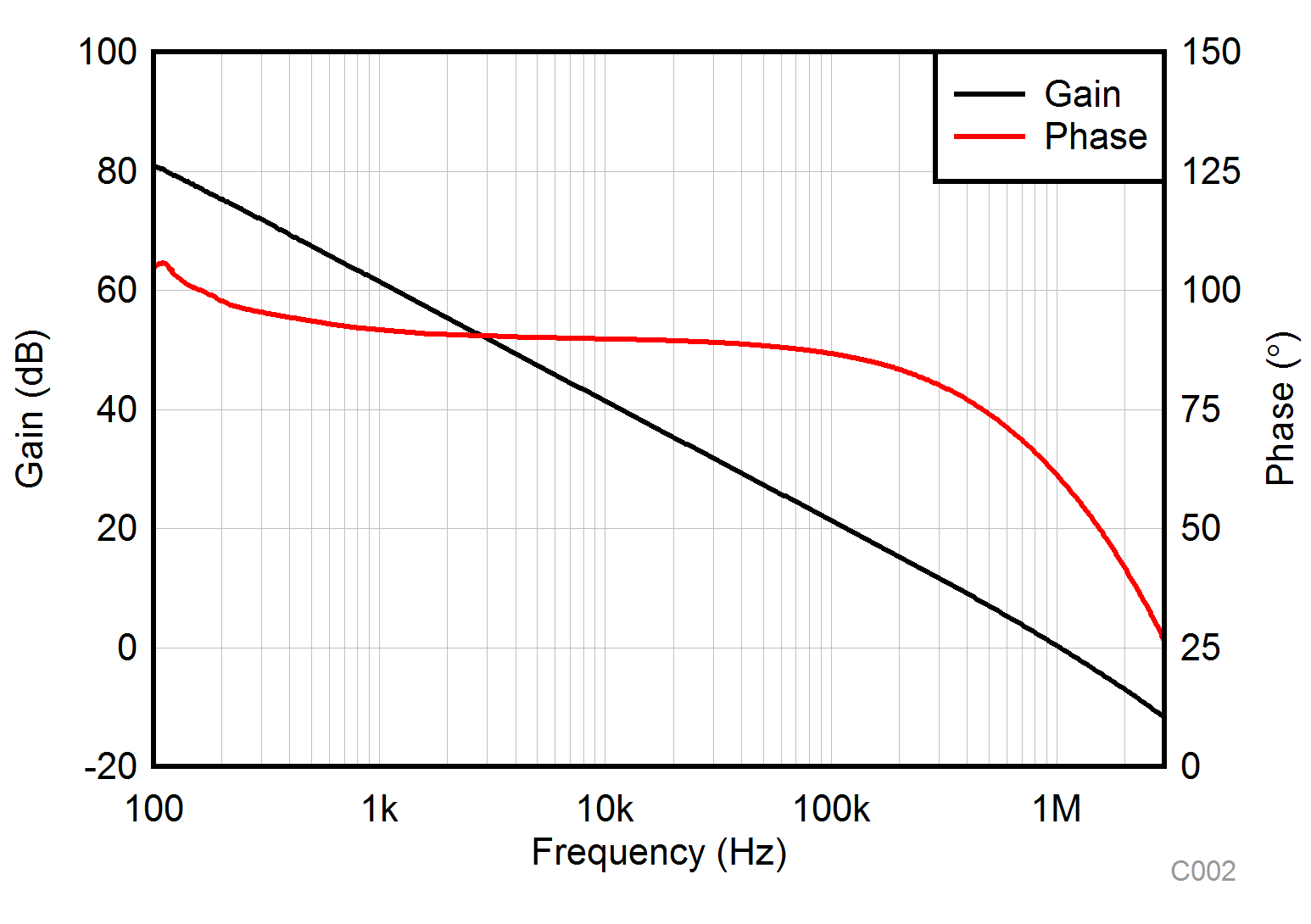 Figure 5-10 Open-Loop Gain
and Phase vs Frequency
Figure 5-10 Open-Loop Gain
and Phase vs Frequency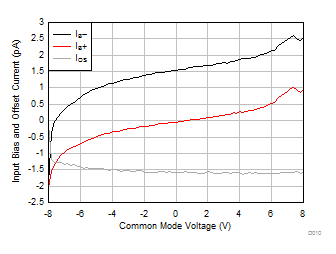 Figure 5-12 Input Bias Current vs Common-Mode Voltage
Figure 5-12 Input Bias Current vs Common-Mode Voltage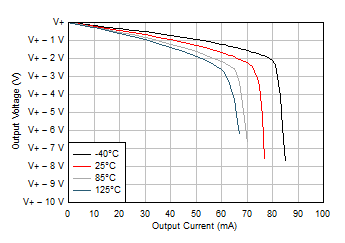 Figure 5-14 Output Voltage
Swing vs Output Current (Sourcing)
Figure 5-14 Output Voltage
Swing vs Output Current (Sourcing)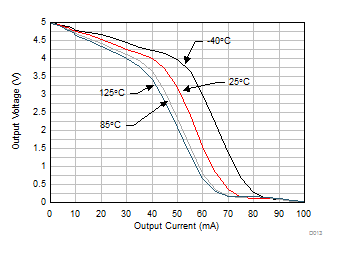
| VS = 5V, RL connected
to V– |
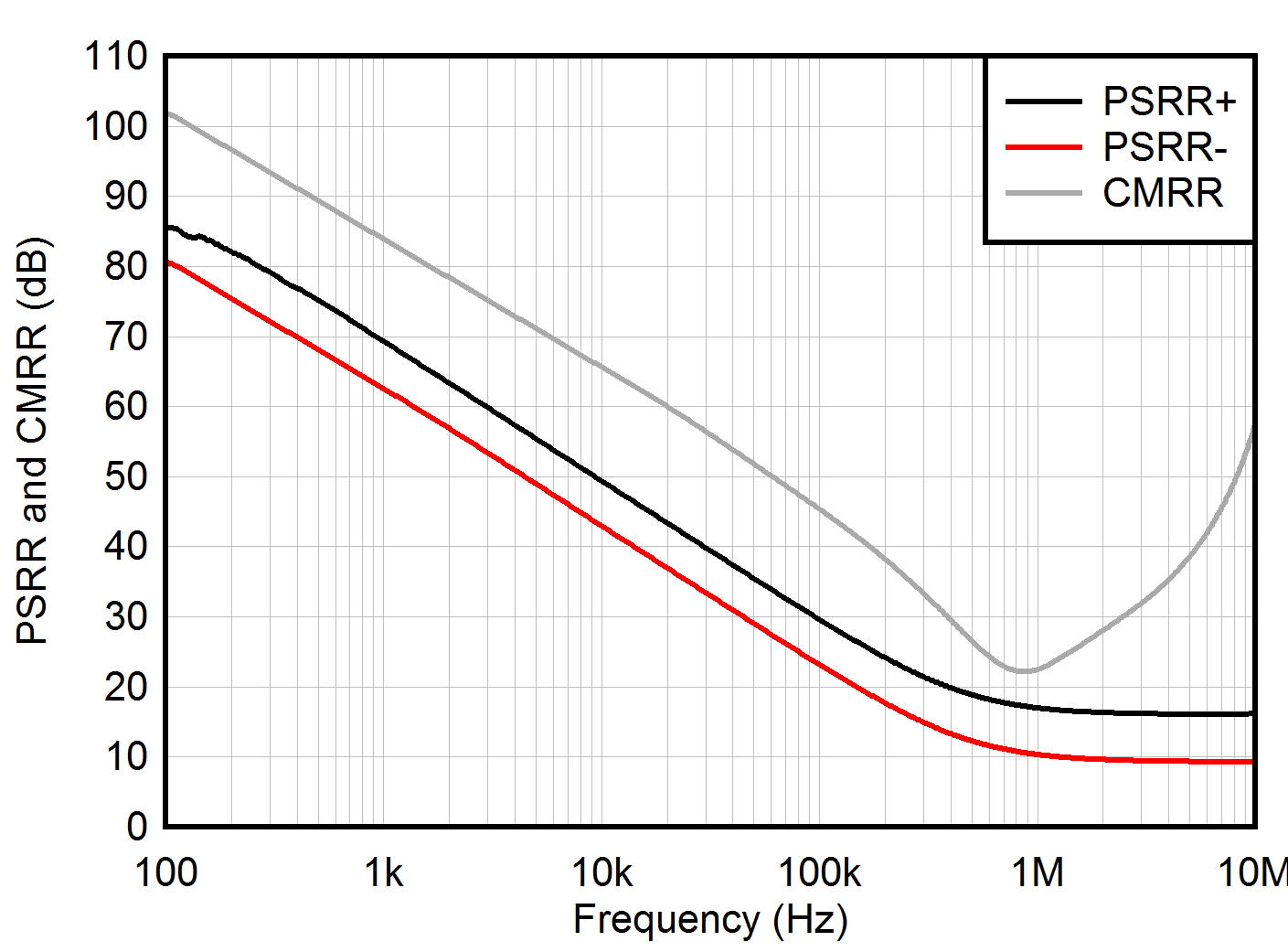 Figure 5-18 CMRR and PSRR vs Frequency
Figure 5-18 CMRR and PSRR vs Frequency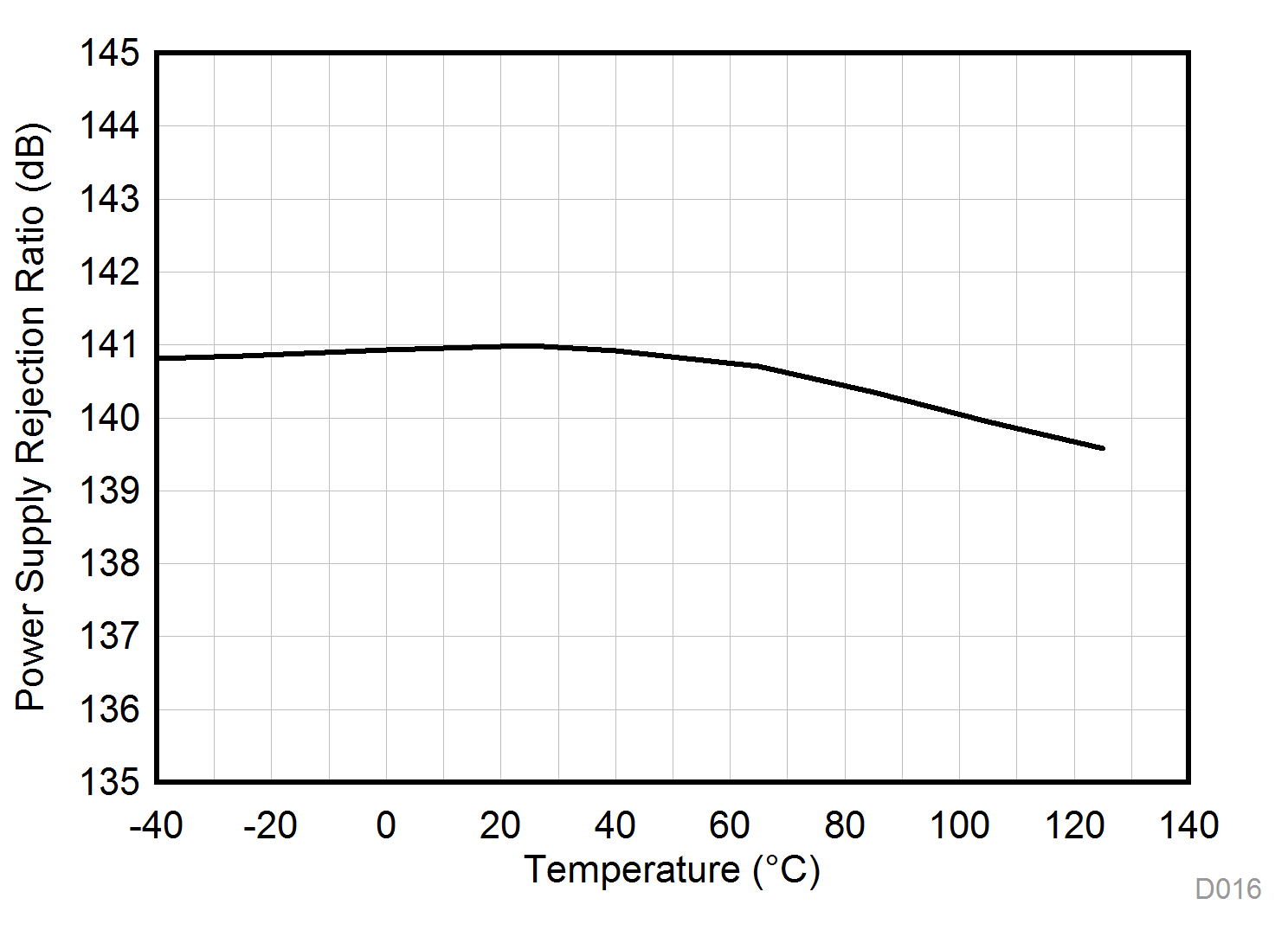 Figure 5-20 PSRR vs Temperature (dB)
Figure 5-20 PSRR vs Temperature (dB)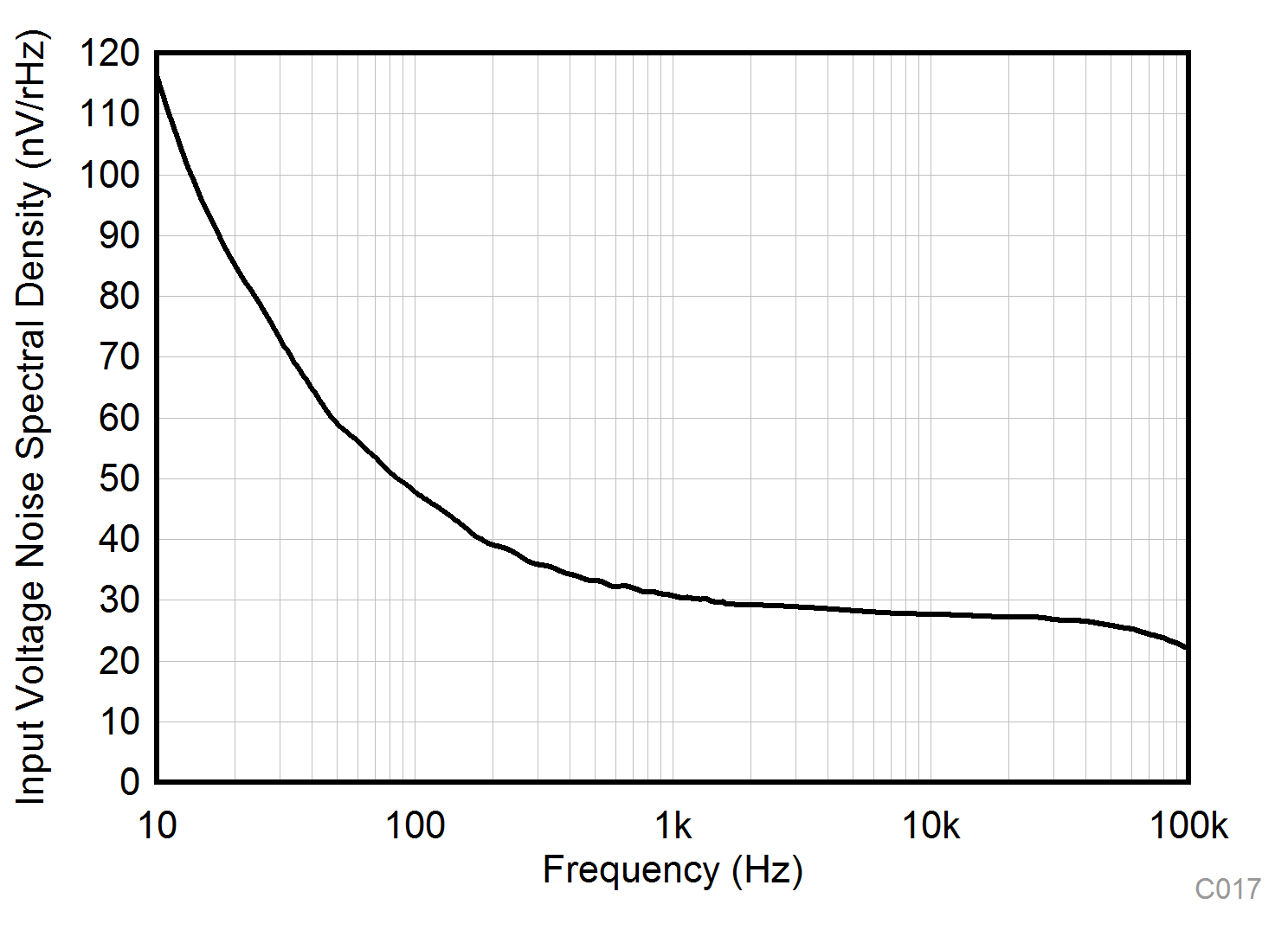 Figure 5-22 Input Voltage Noise Spectral Density vs Frequency
Figure 5-22 Input Voltage Noise Spectral Density vs Frequency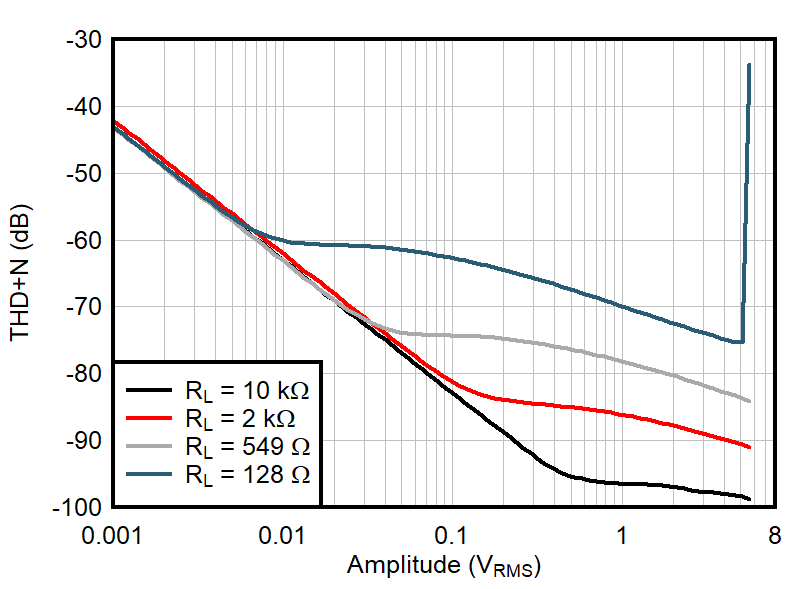 Figure 5-24 THD+N vs Output
Amplitude
Figure 5-24 THD+N vs Output
Amplitude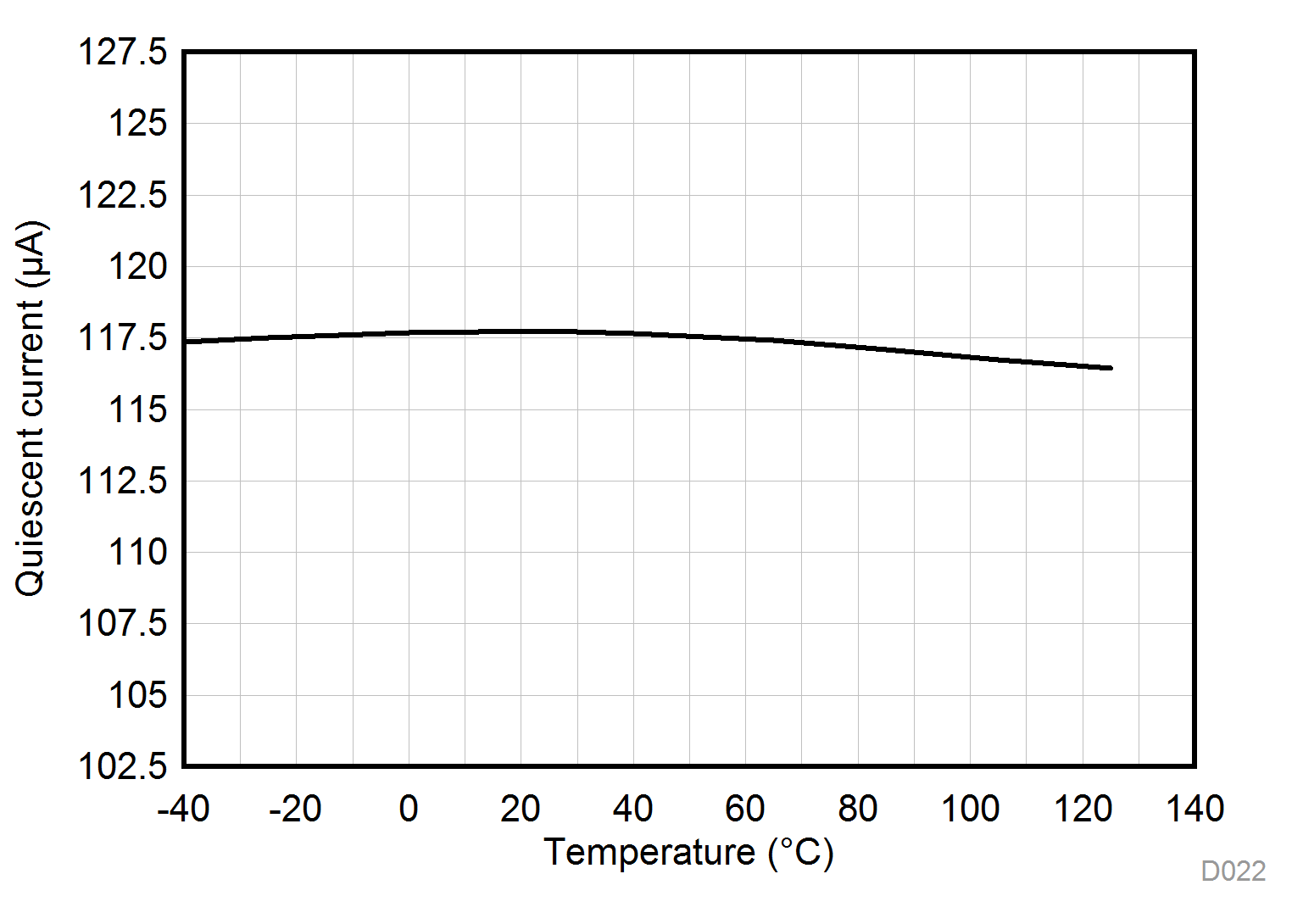 Figure 5-26 Quiescent
Current per Channel vs Temperature
Figure 5-26 Quiescent
Current per Channel vs Temperature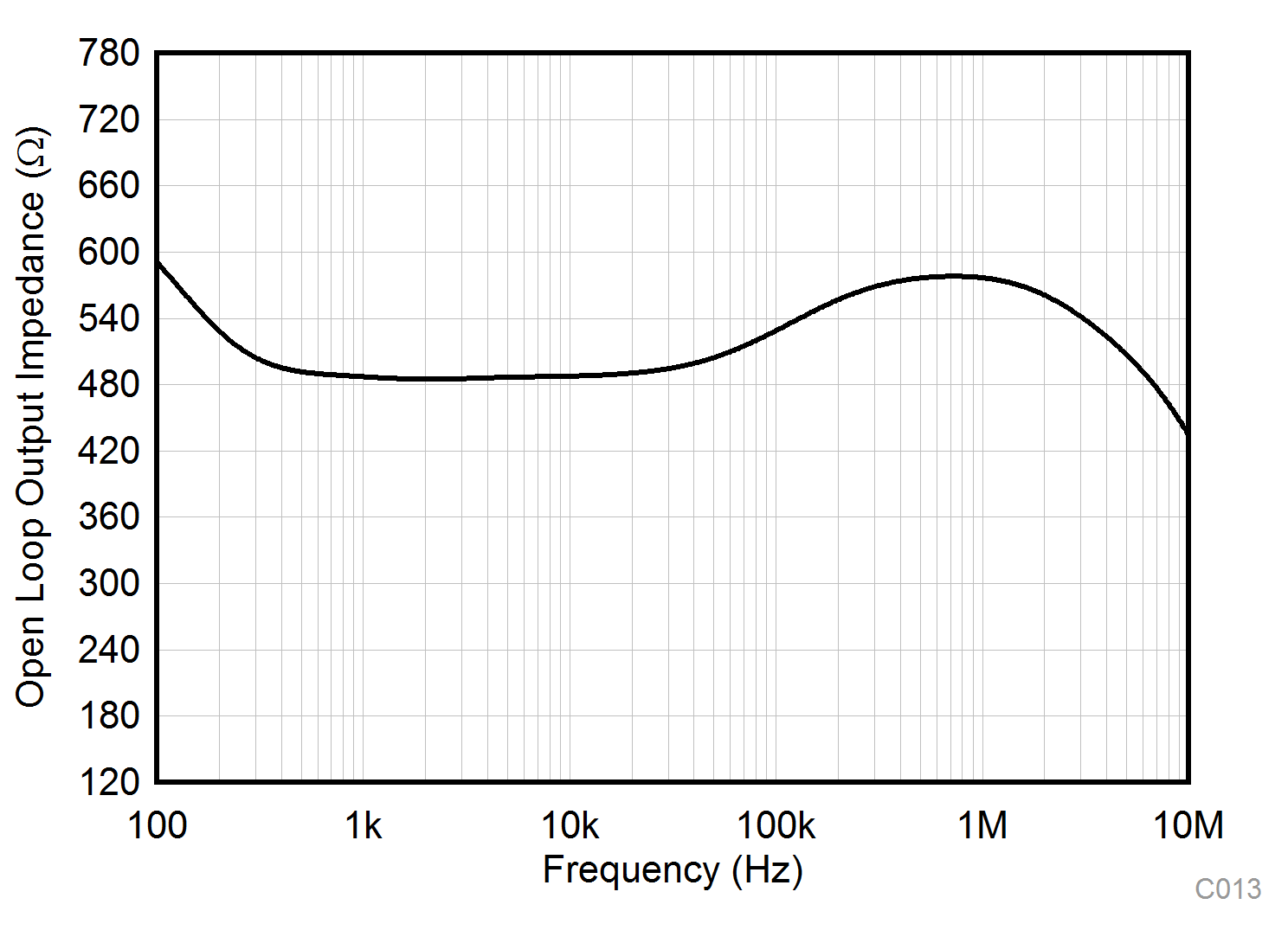 Figure 5-28 Open-Loop Output Impedance vs Frequency
Figure 5-28 Open-Loop Output Impedance vs Frequency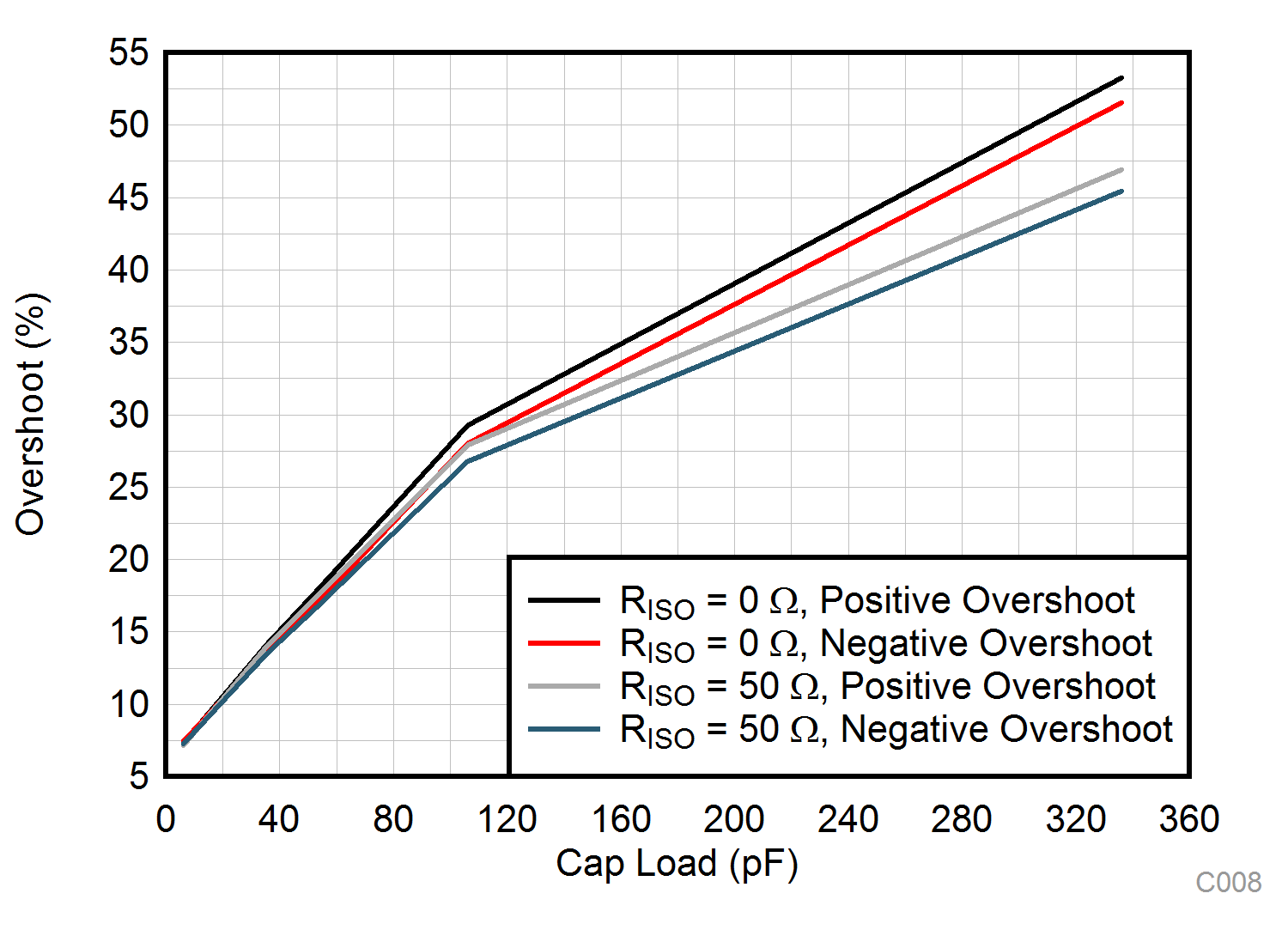 Figure 5-30 Small-Signal Overshoot vs Capacitive Load
Figure 5-30 Small-Signal Overshoot vs Capacitive Load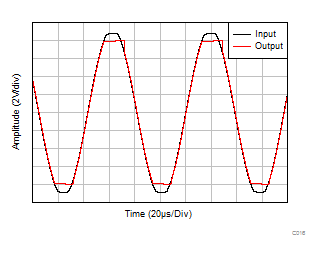 Figure 5-32 No Phase
Reversal
Figure 5-32 No Phase
Reversal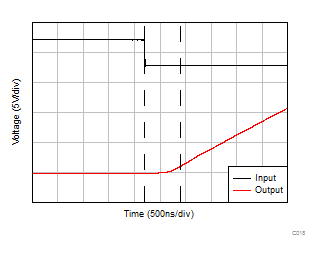 Figure 5-34 Negative Overload Recovery
Figure 5-34 Negative Overload Recovery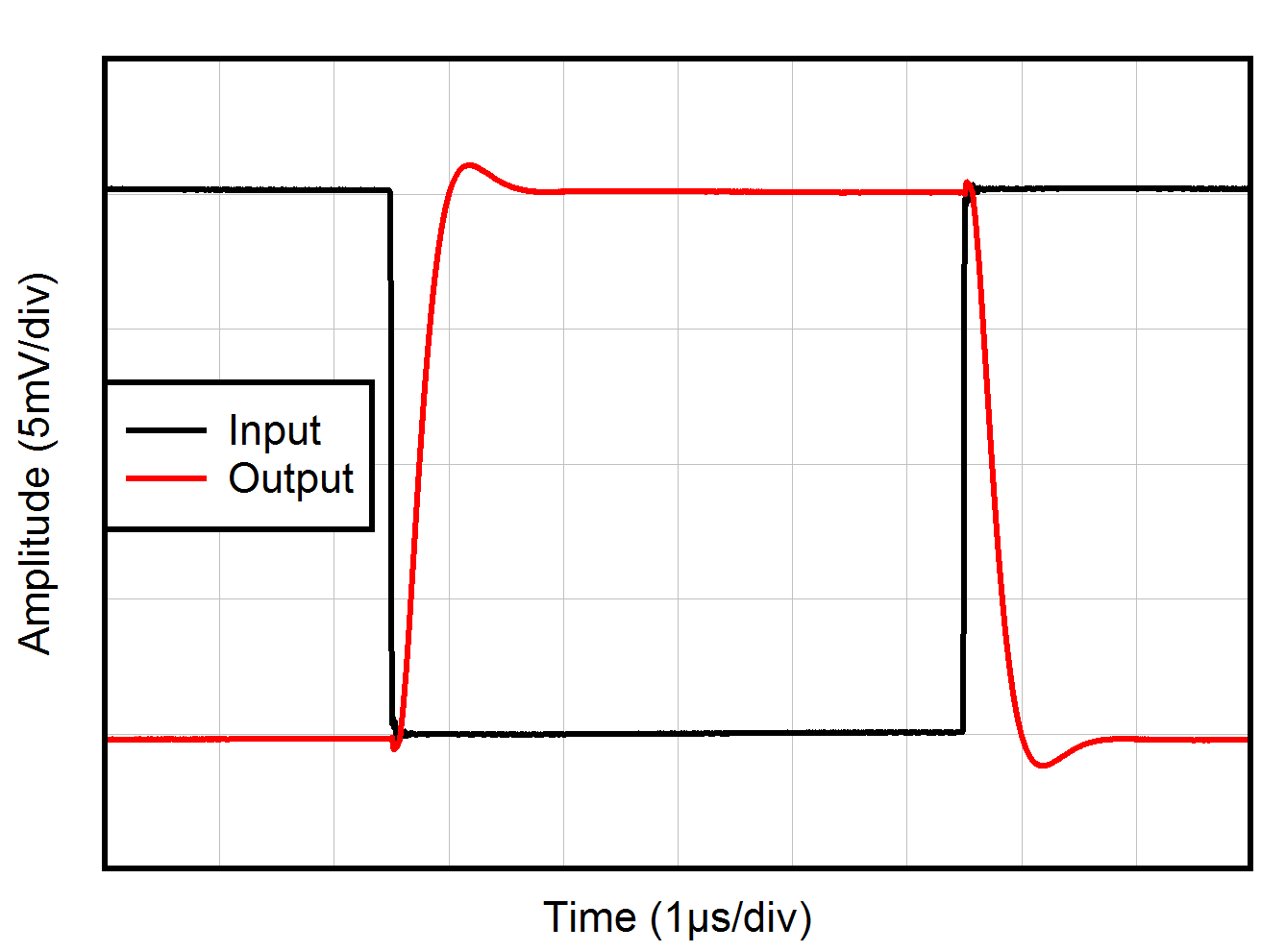
| RL =
1kΩ, CL = 20pF, G = –1, 10mV step response |
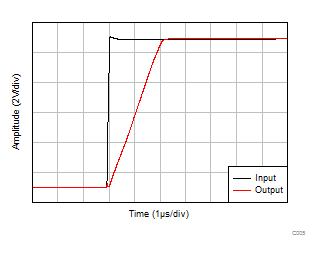 Figure 5-38 Large-Signal Step Response (Rising)
Figure 5-38 Large-Signal Step Response (Rising)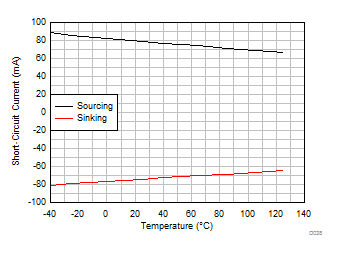 Figure 5-40 Short-Circuit Current vs Temperature
Figure 5-40 Short-Circuit Current vs Temperature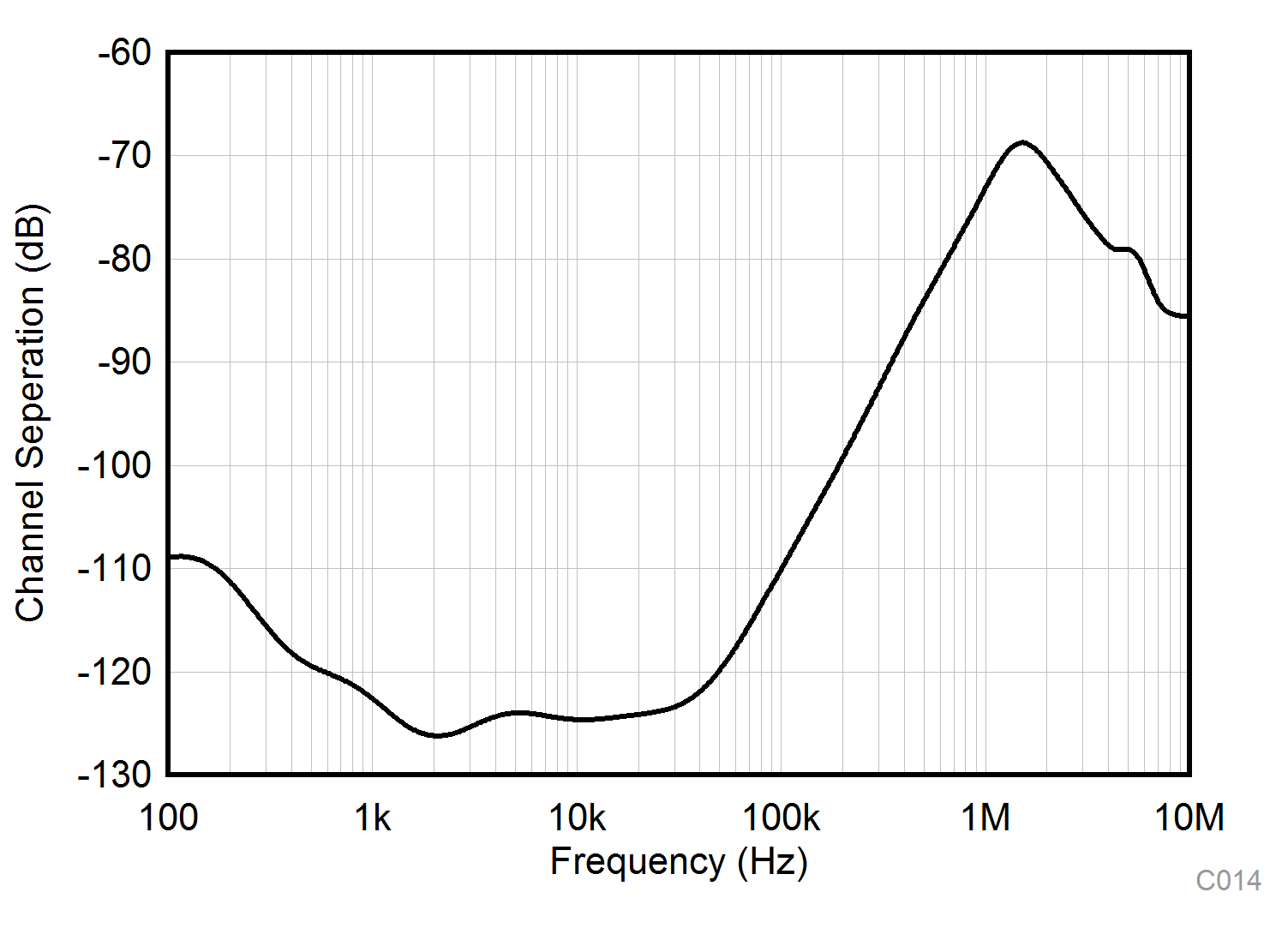 Figure 5-42 Channel
Separation vs Frequency
Figure 5-42 Channel
Separation vs Frequency




 Figure 5-11 Closed-Loop Gain and Phase vs Frequency
Figure 5-11 Closed-Loop Gain and Phase vs Frequency Figure 5-13 Input Bias Current vs Temperature
Figure 5-13 Input Bias Current vs Temperature


 Figure 5-21 0.1Hz to 10Hz
Noise
Figure 5-21 0.1Hz to 10Hz
Noise
 Figure 5-25 Quiescent Current per
Channel vs Supply Voltage
Figure 5-25 Quiescent Current per
Channel vs Supply Voltage Figure 5-27 Open-Loop Voltage Gain vs Temperature (dB)
Figure 5-27 Open-Loop Voltage Gain vs Temperature (dB)





 Figure 5-41 Maximum Output Voltage vs Frequency
Figure 5-41 Maximum Output Voltage vs Frequency Figure 5-43 EMIRR (Electromagnetic Interference Rejection Ratio) vs Frequency
Figure 5-43 EMIRR (Electromagnetic Interference Rejection Ratio) vs Frequency




 Figure 5-12 Input Bias Current vs Common-Mode Voltage
Figure 5-12 Input Bias Current vs Common-Mode Voltage Figure 5-14 Output Voltage
Swing vs Output Current (Sourcing)
Figure 5-14 Output Voltage
Swing vs Output Current (Sourcing)


 Figure 5-22 Input Voltage Noise Spectral Density vs Frequency
Figure 5-22 Input Voltage Noise Spectral Density vs Frequency
 Figure 5-26 Quiescent
Current per Channel vs Temperature
Figure 5-26 Quiescent
Current per Channel vs Temperature Figure 5-28 Open-Loop Output Impedance vs Frequency
Figure 5-28 Open-Loop Output Impedance vs Frequency





 Figure 5-42 Channel
Separation vs Frequency
Figure 5-42 Channel
Separation vs Frequency